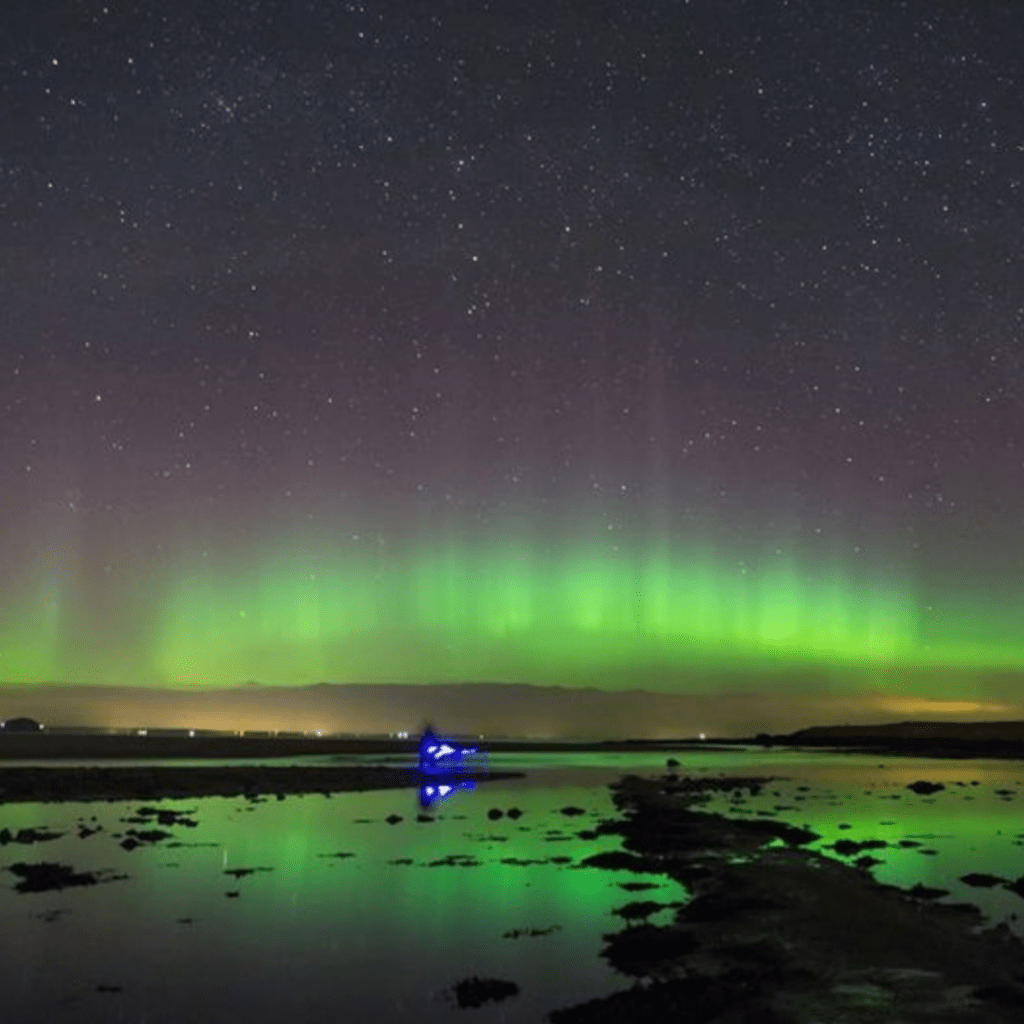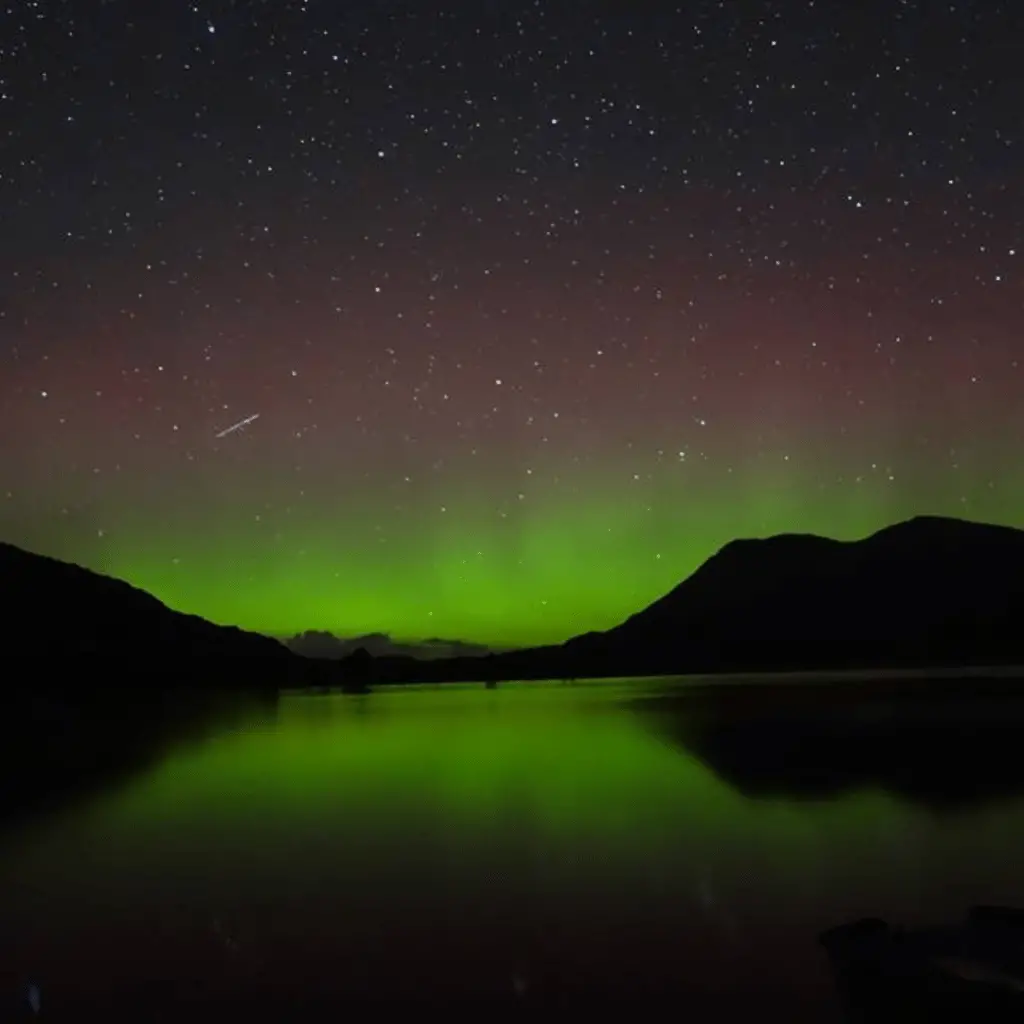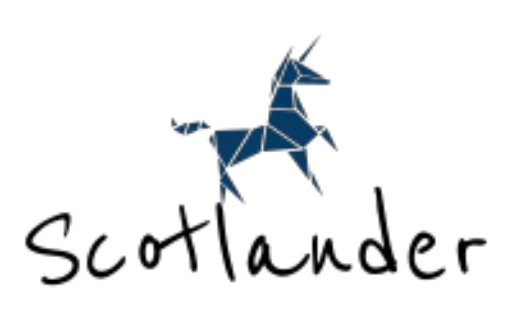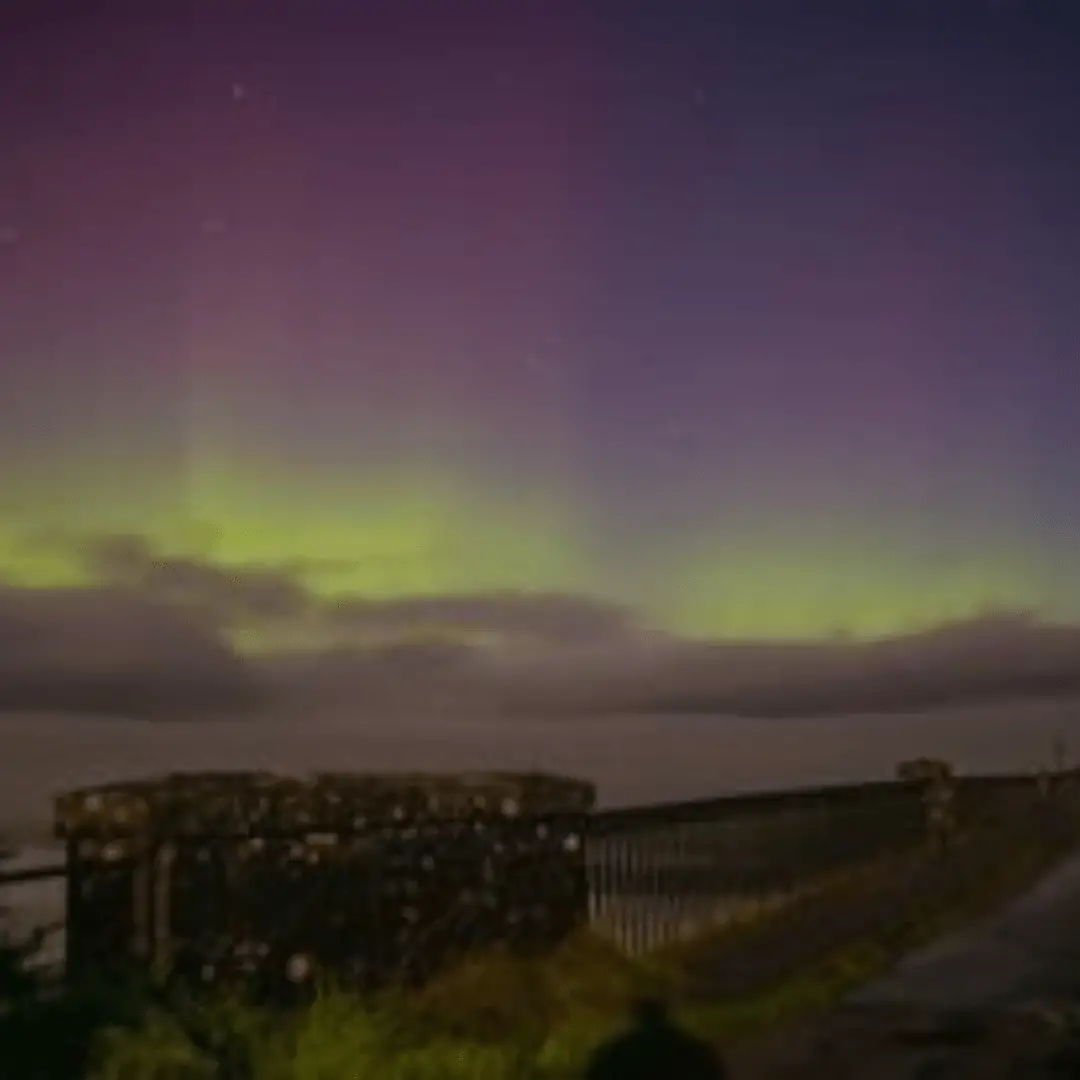Can you actually see the Nothern Lights in Scotland?
Yes, Scotland is one of many countries in the Polar North which you can witness the Northern Lights. It is an absolutely inspiring event to witness. In this article we will highlight what actually are the Northern Lights, Locations around Scotland which will increase your chances of seeing the Northern Lights and some top tips along the way to give you the best chance possible to be blown away by Scotland’s very own Northern Lights Show!
What are the Northern Lights?
The Aurora Borealis is one of the most beautiful phenomena in the natural world. The Northern Lights are a naturally occurring spectacle that most people have heard of but few have actually seen.
These dancing, skipping, multi-coloured lights are caused by charged particles from the sun colliding with the earth’s magnetic field, and they are most visible in Northern countries such as Scotland.
If you are lucky enough to witness this natural phenomenon, you may see the Northern Lights as green, purple, pink or red hues dancing above you. This magical sight has been the source of many myths and legends across different civilisations.
For example, in Scottish Gaelic folklore, the northern lights are called Na Fir Chlis ‘The Nimble Men’ and further North in the Scottish Islands of Shetland and Orkney, you might hear them being referred to as ‘Mirrie Dancers’. Mirr or Mirrie is the Orkney and Shetland word for shimmering, these magical dancers never fail to delight anyone who lays eyes on them.

WHAT CAUSES THE AURORA BOREALIS?
Named after Aurora (the Roman goddess of dawn) and Boreas (the Greek name for north wind), this amazing spectacle is caused by charged particles accelerated into the Earth’s upper atmosphere along magnetic field lines. The energy to drive this display is provided by the sun, in the form of a ‘solar wind’. The sun may be millions and millions of miles away, but it is the reason we see this extraordinary sight.
Aurorae come in all colours, shapes and patterns, setting the night sky alive with rainbows of light. The variations in colour are due to the type of gas particles that are colliding, from yellowish-greens, blues and purples, to fiery reds and oranges. The playful streaks that snake across the night sky evolve and change constantly, and can last minutes or merely seconds. One thing is for certain, the end result is always truly spectacular.
Increase your chances of seeing the northern lights in Scotland
- Check the weather forecast – the best conditions are clear and still nights.
- Find a remote area with minimal Light Pollution as this can significantly reduce your view of the night sky.
- This is not a quick and easy experience. You are likely going to be outside for several hours, so you want to make sure you are nice and cosy inside your Campervan or Tent.
- Keep an eye out for unusual light patterns in the sky. Sometimes it can look like a faint flicker of colour, and other times you will have no doubt that it is the auroras.
- Stay up past bedtime, the wee hours of the morning when everyone is asleep are often when the ‘The Nimble Men’ and the ‘Mirrie Dancers’ come out to play!

Can you see the northern lights with the naked eye?
You can see the northern lights with your naked eyes, but only in conditions where there is very little Light Pollution. It is pretty much impossible to see the Northern Lights during the day as sunlight will completely wash out the colours of the aurora.
Northern lights forecast
Monitoring solar activity is a science in itself and there are a number of online resources that monitor and compile data to predict the best times to see the aurora borealis. In fact, solar forecasts are now so advanced they can predict with a high degree of accuracy the chances of seeing the lights hour by hour.

Understand the KP index
KP index is a scientific reading and understanding it is helpful to interpret the information the websites dedicated to the northern lights offer.
The further north you go, the more likely you are to see the northern lights because the charged particles thrown our way by the sun are concentrated at the poles.
The index ranges from 0 to 10 and it describes how strong the sun’s activity is. So if, for example, the KP index was 0 (the lowest level of activity) you would need to be close to the North Pole in order to see any lights.
As the suns activity increases the KP index rises, with each increase in level indicating an extra 350 km in latitude south from the North Pole where you can see the northern lights.
Bear in mind the KP index rating of a location doesn’t change, and here in Scotland we have a rating of KP 5 for the northern mainland out to the Shetland Isles, and a KP rating of 6 for the tip of the northernmost mainland down to the Scottish Borders.
So in a nutshell, the next time you check a solar activity forecast and you notice there’s a KP index of 5 or 6, there’s a good chance you’ll be able to see the northern lights in Scotland.

The Science Behind The Northern Lights
There’s a lot of science behind the northern lights and having a wee bit of background knowledge about what causes them to appear can drastically improve your chances of seeing them.
So what are they?
To look at, the aurora borealis is a dancing light display in the sky comprised of shimmering bands of changing colours that range from green (the most predominant colour) to yellow, blue, and purple.
Their intensity starts off as barely visible, but as the sky darkens they become ever brighter until the flickering ribbons are replaced by intense coronas of shifting colours that are occasionally joined by arcs, rippling curtains and shooting rays.
To say it’s impressive is a bit of an understatement.
These lights are, in actual fact, caused by activity on the surface of the sun over 92.94 million miles away.
Vast solar storms are constantly erupting on the surface of our nearest star which create enormous clouds of electrically charged particles that travel out into the solar system.
Although the majority miss our planet, some collide and become captured by the earths magnetic field which pushes them towards the north and south poles.
As the particles accelerate they slam into molecules in our atmosphere which makes them heat and glow. The heated particles are also moved by the lines in the earth’s magnetic field, creating those famous wavy patterns in the night sky.
what about the colours?
Well again, there’s some interesting science behind the phenomena. The two main gases in our atmosphere are nitrogen and oxygen, and if you remember your science class at school you’ll know that different gases radiate different colours when they’re heated.
That’s why the northern lights are usually seen as green and yellow, as oxygen produces these colours when heated, while blues and purples are caused by heated nitrogen.
The quantity of these elements varies between the layers of our atmosphere so as the solar particles hurtle towards us they create different colours depending on which elements they heat up.
The northern tip of our mainland lies at the same level as Stavanger in Norway while our northernmost Shetland Isles are equivalent in latitude to Bergen, meaning your chances to see the lights will improve the further north you go.
Second, we know the aurora doesn’t begin until 80 miles (128.75 km) above the earth’s surface which means it’ll be completely obscured by any low-lying cloud, and because it’s so high up it’s also faint, so any nearby lights will almost entirely block it out.
Third, because the phenomena is completely dependent on solar activity we’ll have the best chance of seeing it if there are strong storms on the sun’s surface, which means we need an accurate solar forecast.
So that’s four variables that affect our ability to see the northern lights: how far north we are, how much light pollution there is, what Scotland’s weather is doing, and how much solar activity there is.

Best Places to see the Northern Lights in Scotland?
The North of Scotland, including our Highlands and Islands will no doubt increase your chances of viewing this spectacle. The Aurora Borealis could however be seen anywhere in Scotland if the right conditions are met and where the light pollution is at a minimum. As the Northern Lights are concentrated at the poles, they are most visible at higher altitudes with low light pollution. This is why the Scottish Highlands are such a great place to witness them!
North Coast 500
Throughout the iconic North Coast 500 Road Trip there are many fantastic opportunities to stop for the night and view the night sky, with the possibility of also witnessing the Northern Lights. Villages and Towns around the North Coast 500 are only lightly populated in comparison to Scotland’s larger cities. These Towns and Villages around the NC500 make for a great pitstop with nice local shops & cafes to get you fed & watered ready for the night.
To avoid any light pollution from these towns, you would be best moving to a more remote location, outside of the towns. Having a Campervan or Tent really makes a big difference here as you can pick a fantastically remote area and get yourself organised for viewing the night sky and hopefully also witnessing the Northern Lights.
Shetland And Orkney Islands
It makes sense to travel as far north in Scotland as possible to be closer to the Aurora Borealis. Therefore you could book a ferry with your Campervan and venture to the northernmost regions in Scotland, the Orkney and Shetland Islands, over 100 miles (160 kilometres) from the mainland of Scotland.
Shetland lies closer to the North Pole than any other part of Britain, making it one of the best places to see the Northern Lights in Scotland. Over winter, the locals will vouch that you can expect to see the auroras several times with a mix of low-level displays and one or two really spectacular ones. There is an abundance of open countryside on Shetland so there are plenty of places to pull up your Campervan and settle down for a magical night,
Not only would you have the chance to see the northern lights in the Orkney and Shetland Islands. You’d also get to admire coastal scenery, spot wildlife and soak up Viking history. In January, experience the Up Helly Aa fire festival in honour of Viking traditions that celebrated the rebirth of the sun each winter.
Outer Hebrides
Another cluster of islands you should consider for witnessing the Northern Lights in Scotland is the Outer Hebrides. This northwestern archipelago is scattered in the Atlantic Ocean and flaunts breathtaking, secluded islands set away from light pollution.
There is little to no light pollution here, which means the skies are open, dark and clear, which makes perfect conditions for a possible sighting of the Northern Lights. There are lots of remote beaches on the Isle of Harris which sits to the south, and the open flat countryside of Lewis offers up large empty landscapes perfect for good views. Uist and Barra are also part of the Outer.
Spend your days exploring gorgeous white sand beaches, characterful towns like Stornoway, and Neolithic monuments such as the Calanais Standing Stones. The untouched landscapes provide a wonderful backdrop to the Northern Lights, should they appear. If you don’t get lucky spotting the Aurora Borealis, these islands will captivate you nonetheless.
Isle Of Skye
The Isle of Skye is another iconic place to add to your Road Trip. The Isle of Skye is an island set off the west coast of Scotland and is known to be a good location for Northern Lights in Scotland. There are many remote regions which are away from light pollution, so you won’t struggle to find somewhere quiet to park up and wait. There are a good few Dark Sky Discovery sites on the island. Glendale, where you will also find the famous Fairy Pools, is said to be a good location where they have been seen on occasion, but there is no telling where the lights will show face, you just need to choose a remote location and get cosy while waiting.
There’s a certain romance in the air at this time too, so you may want to consider visiting on a Honeymoon or romantic couple’s break. Whether or not the northern lights appear for you, Skye’s magic will cast a spell on you.
Aberdeenshire
On a trip to northeast Scotland, you could try your luck searching for the northern lights and enjoy some quintessential Scottish experiences too.
This part of Scotland tends to have less rain compared to the west, so that means you might get clear night skies to see the northern lights. You’d also have a good chance of getting sunshine on the Moray Firth, which many say has the most sunny days in Scotland.
Of course, nothing is guaranteed when it comes to weather and northern lights. If you don’t get to view the aurora borealis, there are plenty of other things to see and do in Aberdeenshire and Moray Speyside.
Go whisky tasting in the acclaimed Speyside region, home to more than 50 whisky distilleries. Look for dolphins, seals and otters on the Moray Coast and wander along rolling sand dunes. Or find out why Aberdeenshire is called “Scotland’s Castle Country” – among them, the dramatically placed Dunnottar Castle.
What’s more, if you love the great outdoors, be sure to visit the stunning Cairngorms National Park in northeast Scotland.
The Moray Coast sits north of the Highlands and takes in the northern coast between Nairn and Aberdeen. There is much to be seen along this coastline including traditional coastal villages, lovely sandy beaches, historic castles and ruins, and beautiful woodlands. Inland, you will find lots of lovely countryside to explore and the Cairngorms National Park which reaches into Moray, with Glenlivet and Tomintoul being great towns to visit – this is proper whisky country! Grab your blanket and hip flasks and make an event of aurora watching.
Galloway Forest Park
This is the most southerly location in this list but don’t think that means there’s less of a chance to see the northern lights because Galloway Forest Park is one of the darkest places in Britain.
This vast forest lies on the west coast of Scotland south of Ayr and west of Dumfries in a region that’s relatively flat and lightly populated. While there are more villages here than you’ll find further north it’s almost entirely comprised of farmland, so very little – if any – light pollution manages to escape into the park.
Even if you don’t manage to see the aurora borealis there are fun times to be had in the forest thanks to an extensive network of mountain biking routes including the world-famous 7stanes trails.
There are also three excellent visitor centres at Kirroughtree, Glentrool and Clatteringshaws so if you’re unsure where to head first you might like to visit one of the centres and ask the staff for advice.
cairngorms National Park
You can usually rely on a national park to serve up remote and peaceful areas in which you can be sure of high levels of dark skies. With lots of wilderness to explore, the Cairngorms National Park is a popular spot for those into outdoor activity and adventure. A huge outdoor playground, all year round it is busy with families and friends enjoying the seasons, and getting out and about on all sorts of explorations. It settles down at night time though, making this a relaxing spot to try and experience the northern lights in Scotland. Tomintoul and Glenlivet have been awarded the status of ‘International Dark Sky Park’.





